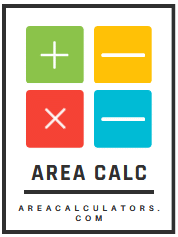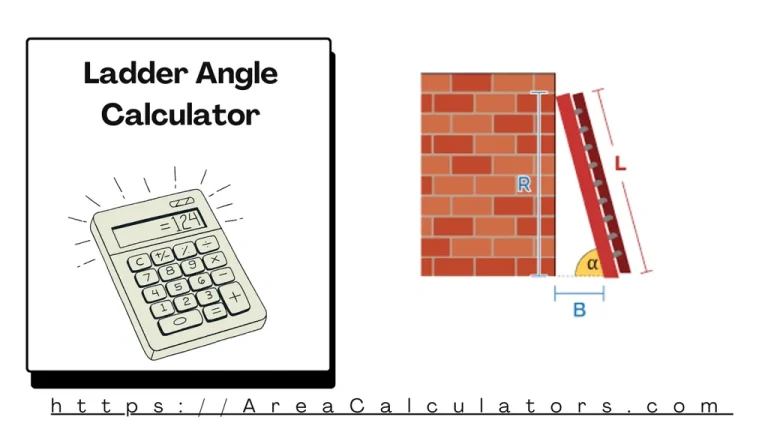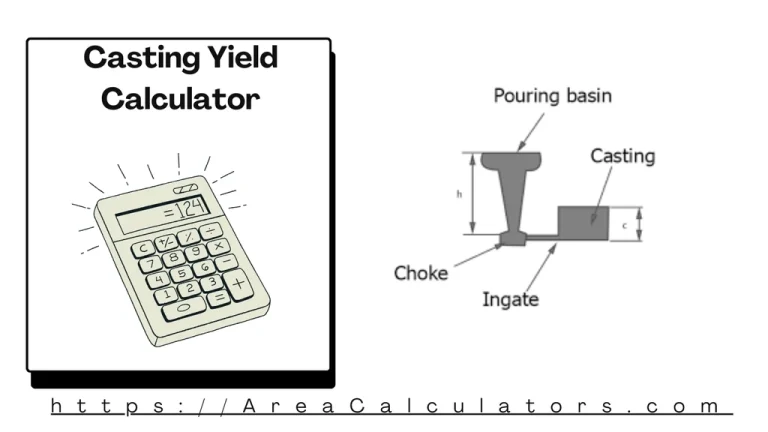Catchment Area Calculator
To calculate the catchment area, divide the harvested water (HW) by the rainfall depth (RFD) divided by 0.623. This will give you the catchment area needed to collect the required amount of water.
The Catchment Area Calculator helps determine the size and boundaries of an area where water is collected, such as for drainage, rivers, or reservoirs. This tool is crucial for calculating the total catchment area size and creating catchment area maps.
By using specific formulas, like the catchment area ratio method, the calculator provides accurate measurements, whether you’re calculating for a school district, drainage system, or water reservoir. It can also be applied to create maps with tools like Google Earth
Formula:
| Variable | Meaning |
|---|---|
| CA | Catchment Area (square feet) |
| HW | Harvested Water (gallons) |
| RFD | Rainfall Depth (inches) |
| 0.623 | Conversion factor (inches of rain to gallons per sq ft) |
Solved Calculations :
Example 1:
Given Values:
- HW = 5000 gallons
- RFD = 12 inches
| Calculation | Instructions |
|---|---|
| CA = 5000 / (12 / 0.623) | Divide the rainfall depth by 0.623. |
| CA = 5000 / 19.26 | Perform the division. |
| CA ≈ 259.52 square feet | The result gives the catchment area. |
Answer: CA ≈ 259.52 square feet
Example 2:
Given Values:
- HW = 3000 gallons
- RFD = 10 inches
| Calculation | Instructions |
|---|---|
| CA = 3000 / (10 / 0.623) | Divide the rainfall depth by 0.623. |
| CA = 3000 / 16.05 | Perform the division. |
| CA ≈ 186.88 square feet | The result gives the catchment area. |
Answer: CA ≈ 186.88 square feet
What is Catchment Area Calculator ?
The catchment area is the region from which water is collected by a natural landscape or man-made system, such as a drainage basin or a roof. To calculate the size of a catchment area, you can use the formula A = P x R, where P is the amount of rainfall, and R is the runoff factor.
Here, it is made easy for different applications like determining the total catchment area size or creating school catchment area maps. Hydrologists often rely on these tools to map out watersheds, drainage areas, and other water collection systems, ensuring proper water flow and distribution.
In addition to calculating water catchment for drainage systems, the tool is also useful for urban planners. It can help determine catchment areas for schools or hospitals, aiding in efficient resource distribution.
Using advanced software like ArcGIS or Google Earth, you can accurately map out catchment areas and ensure coverage for essential services. Whether you’re calculating for drainage catchment areas or using the catchment area calculator for schools, this tool provides reliable measurements that are essential for infrastructure development and environmental conservation.
Final Words:
The Catchment Area Calculator is useful for different things. For water Harvesting Efficiency, it helps figure out how good water harvesting systems are by telling us how much land we need to collect a certain amount of rainwater.



